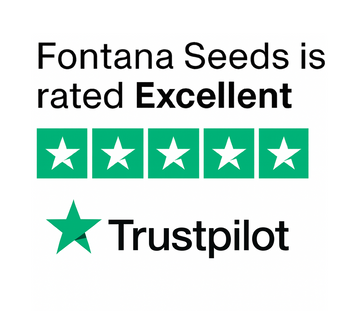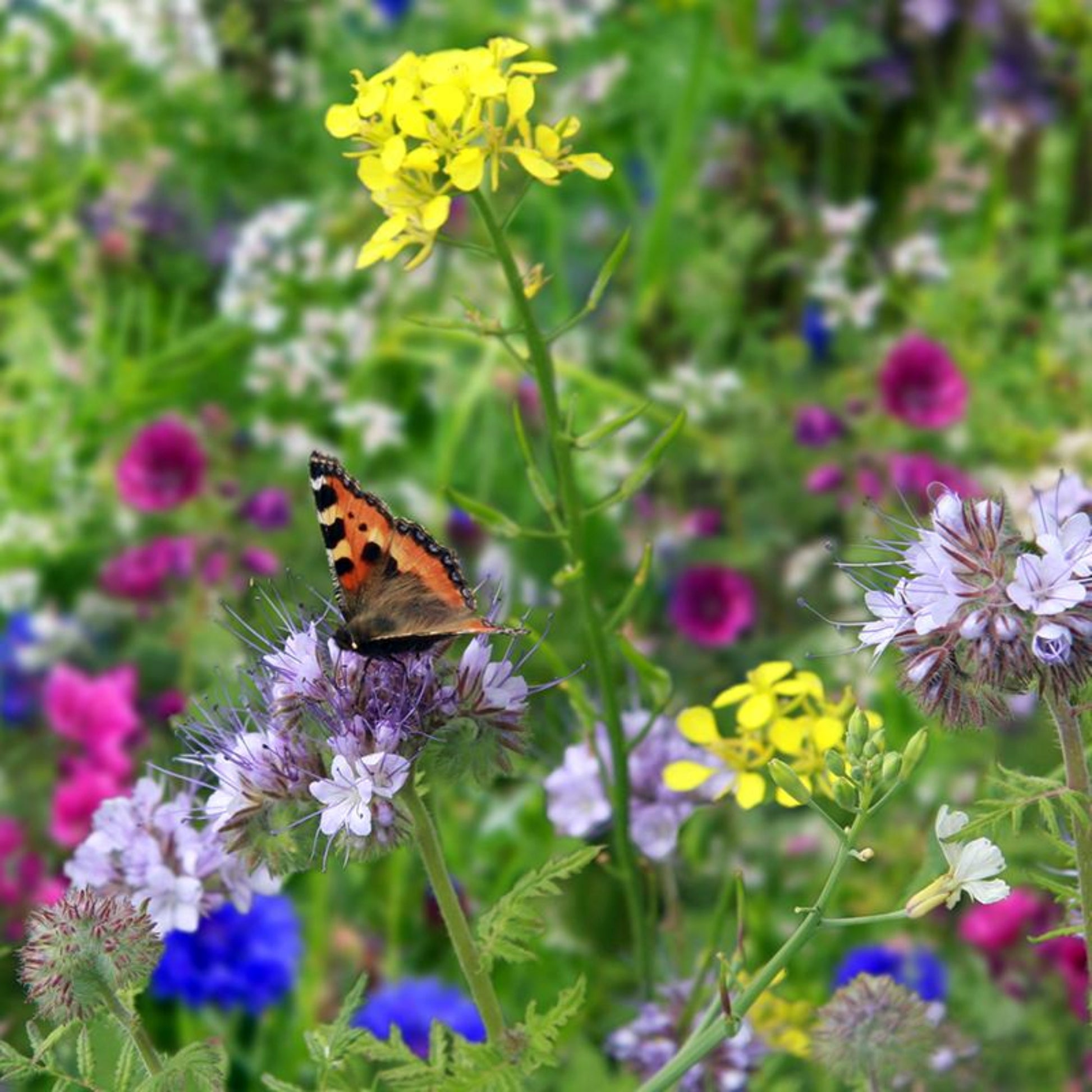
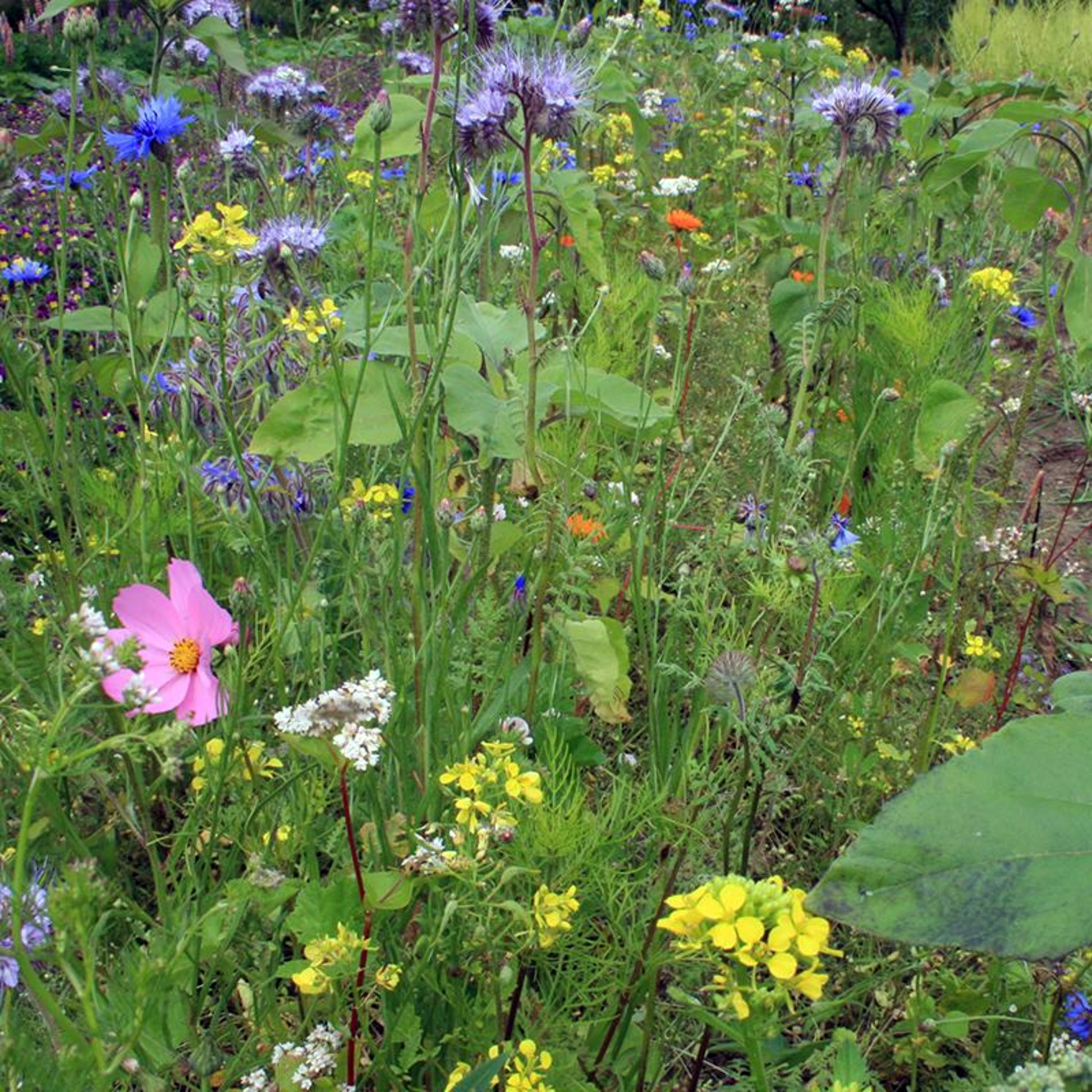
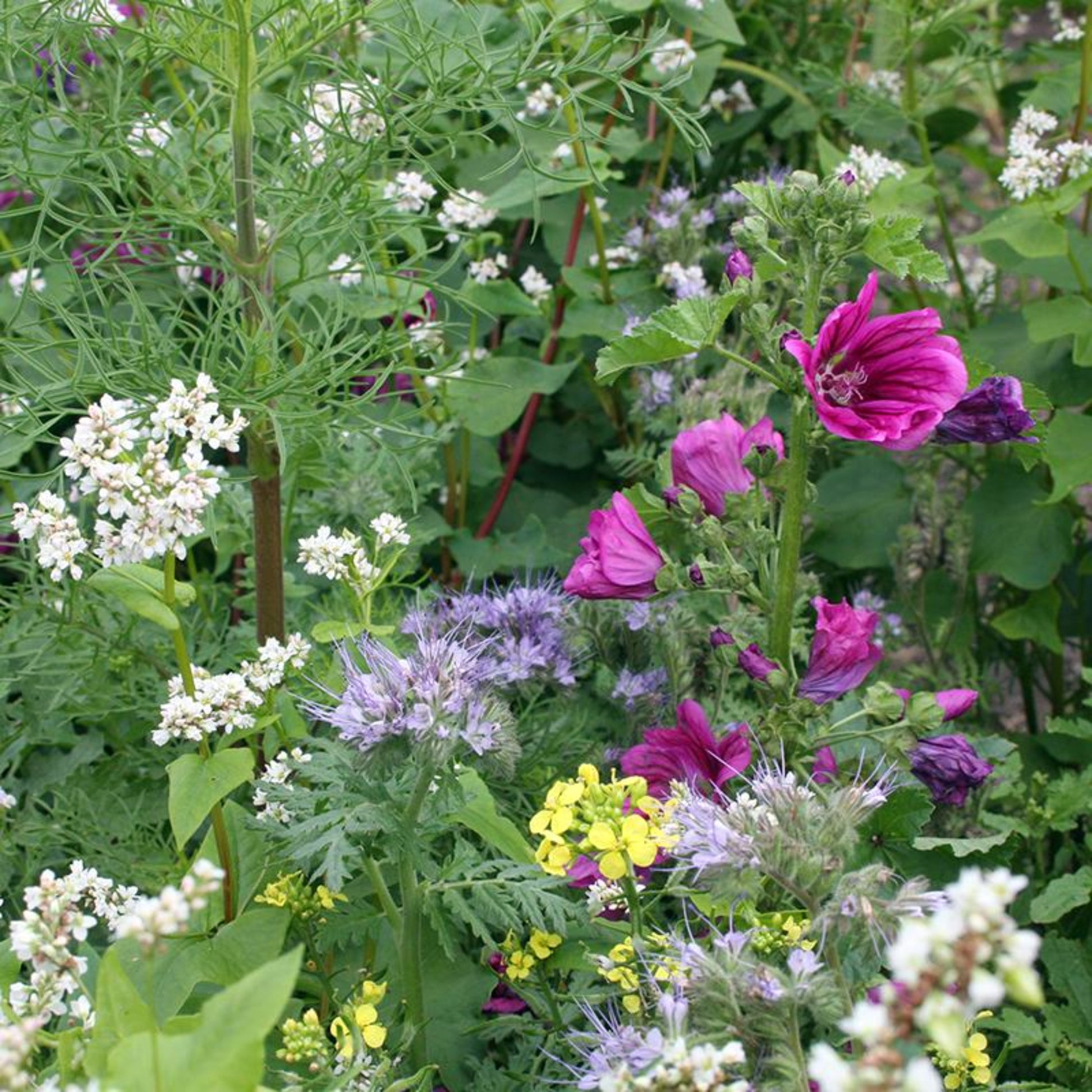
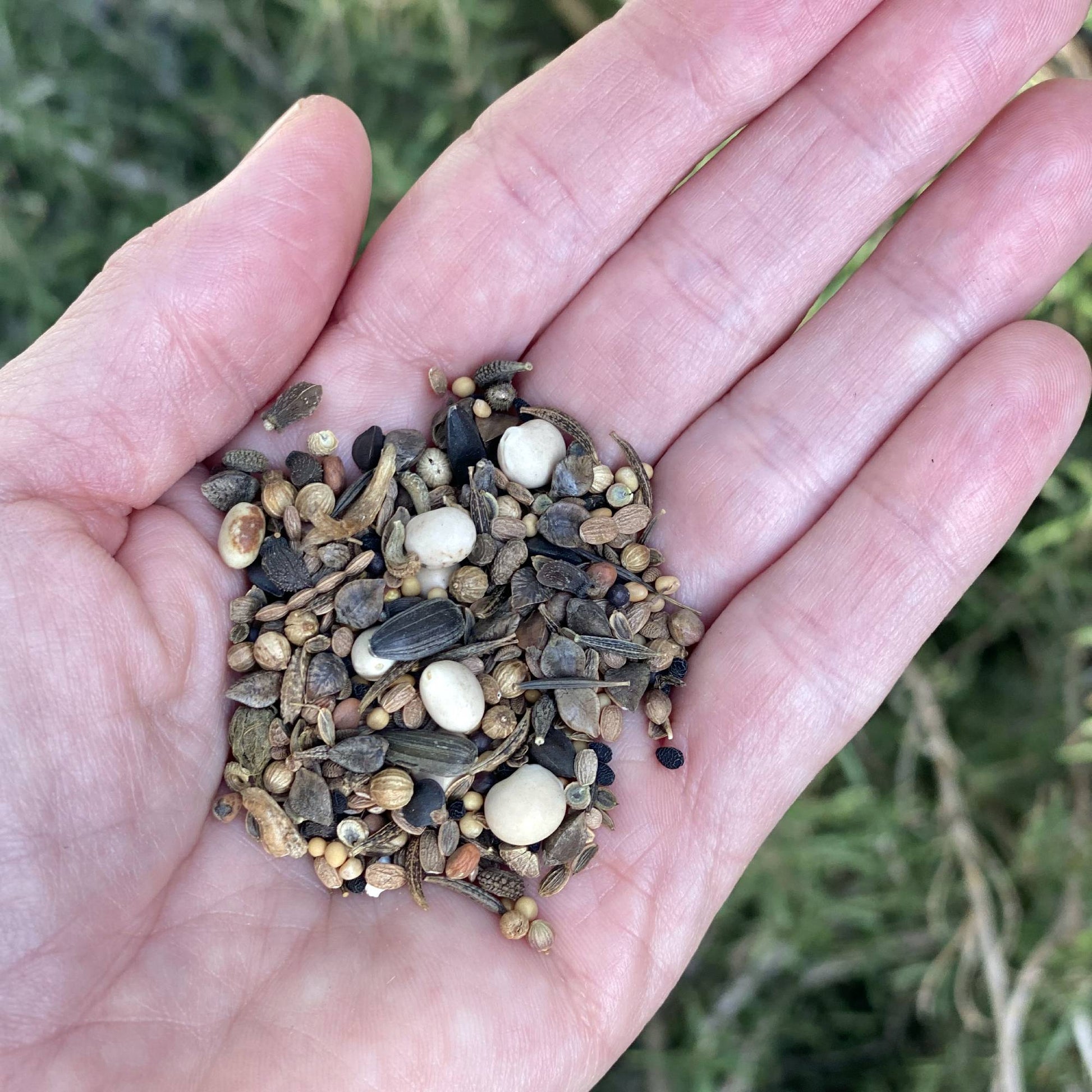
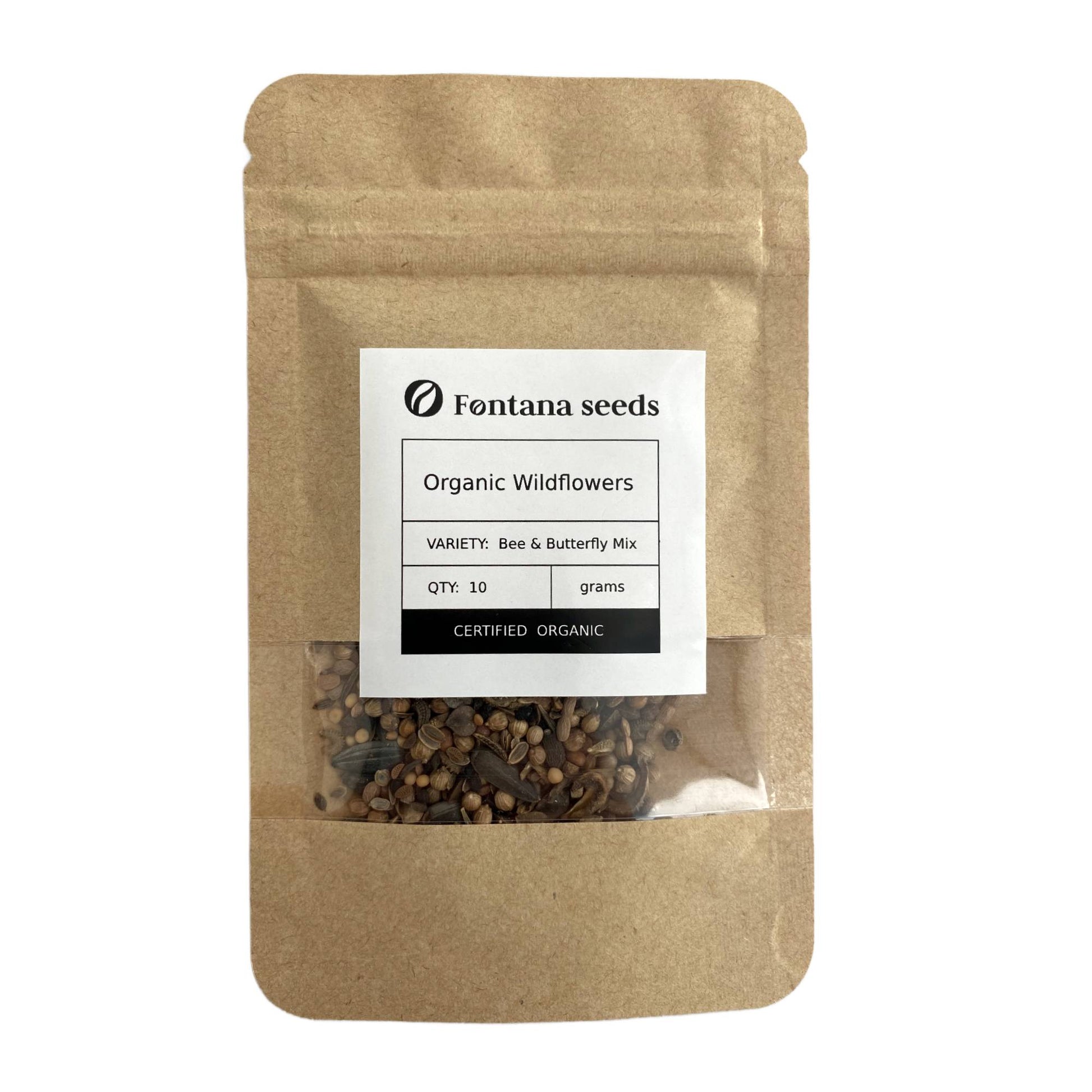
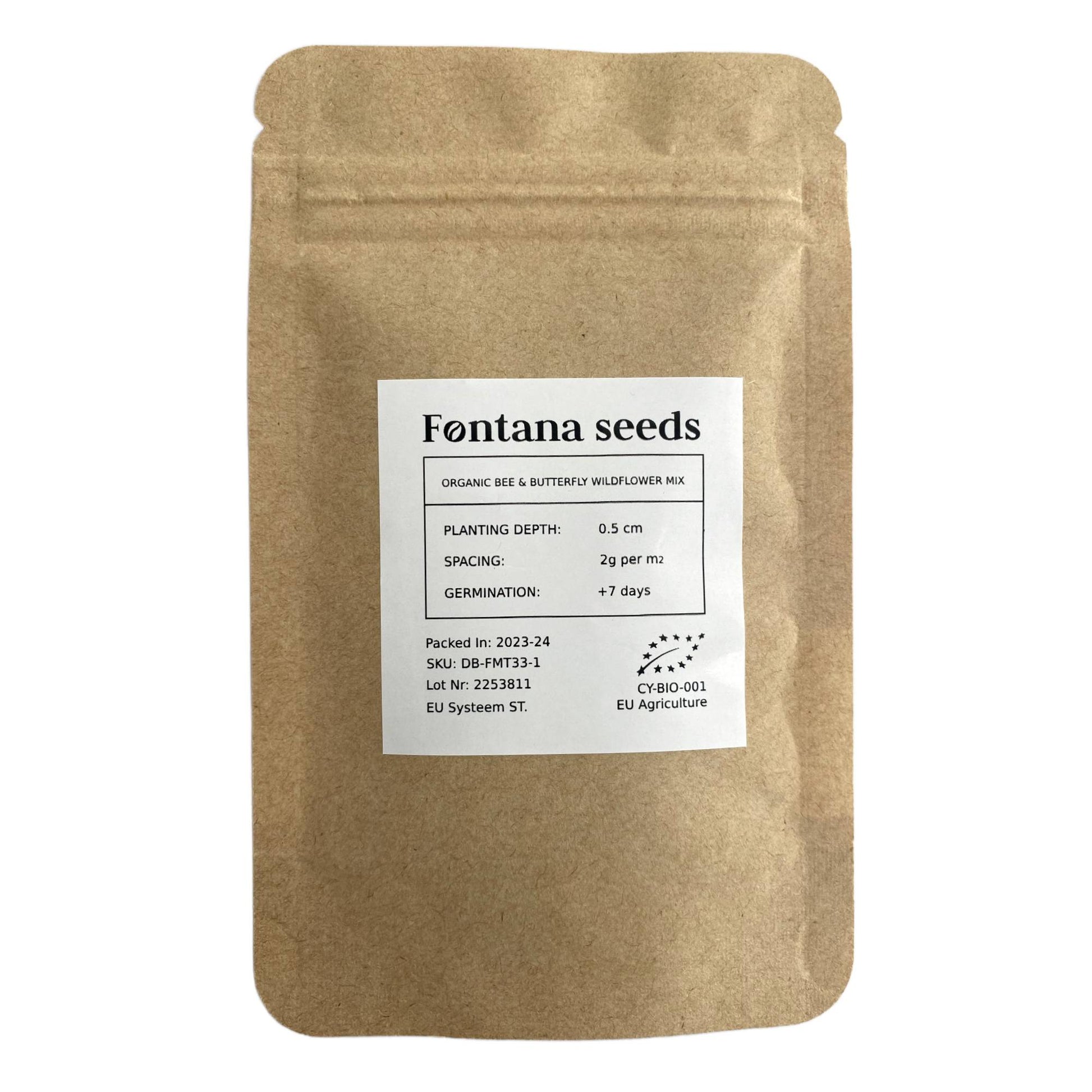
Organic Flowers: Bee & Butterfly Mixture
- Attracts bees and butterflies
- A win-win for both gardener and insect!
- Planting this mix supports the well-being of bees
- 10g per pack
-
Shipping Cost ONLY €3.75 for all EU Countries!
Every garden needs pollinators and bees are among the best. Without them there would be limited flowers and even fewer fruits and vegetables. Since bees add more than a soothing buzzing sound, it's worth putting some thought into making your garden inviting for them.
Bees are basically looking for two things when they visit your plants, Nectar and Pollen. Nectar is loaded with sugars and it’s a bee’s main source of energy. Pollen provides the balanced diet of proteins and fats.
Ideally your garden would provide bee-friendly flowers that are rich in pollen and nectar which bees can easily access from spring until late summer. Whether your garden be a balcony, allotment, window box, hanging basket, pots and tubs or a swathe of green open space we can all provide pollinators with a banquet of pollen and nectar throughout the year.
The selection of flowers in our Bee & Butterfly mixture is a carefully chosen range of annual flowers that are rich in both nectar and pollen that both bees and butterflies adore. It contains 13 varieties in a wealth of shades, colours and species: Phacelia, Buckwheat, White Mustard, Coriander, Love-in-a-Mist, Marigold, Cornflower, Oilseed Radish, Mallow, Borage, Dill, Common Bird's Foot and Sunflower.
Easy to grow and fast to flower, these hardy annuals can be sown directly outdoors where they are to grow. They are unrivaled for bringing summer colour to the garden.
They can also used in a more formal way, the seeds can be sown in trays, moved on individually into pots and planted out exactly where you want them to create the best effect. You don't need vast amounts of space. Indeed, a bed as small as a dining table can be just as effective as a generous sweep and they can even be grown in containers.
Sown from March they will flower within six to eight weeks for a prolonged period and provide you with pleasure throughout the summer. Growing to an average height of 70cm, they are ideal for beds and borders and for cut flowers and will attract many beneficial insects including bees and butterflies to the garden.
Order seeds which produce wild flowers that attract bees at Fontana Seeds. We ship our seeds everywhere in Europe.

We keep it simple: shipping is a flat-rate €3.75 to any address in the European Union. Orders are packed on the sunny island of Cyprus and handed to the carrier within 1–3 working days. We ship by regular mail with delivery confirmation. As soon as your parcel leaves us, you’ll receive an email with a tracking link so you can follow it in real time. Typical delivery time is 5–15 business days, depending on destination and your local mail service. We currently ship within the EU only.
What Our Gardeners Are Saying
Real reviews from people who planted, grew, and loved it.
"Delighted. Sowed 15 hollyhock seeds to stagger planting, got 15 plants, now to Keep alive over winter in small greenhouse. Did autumn sowing of wildflowers in pots, have 4 pots of seeds germinated."
“Excellent company, 1st class seeds and 100% germination. Fast delivery. Have ordered twice and will continue to use Fontana Seeds.”
“Super selection and quickly delivered to Malta with full instructions how to prepare and take care of each item. Highly recommend 🌹”
“Ordered some seeds which arrived promptly and beautifully packaged. Very pleased.”
“Quick service. Very good quality seeds with excellent results after planting!”
"THE PRODUCT WAS WELL PACKAGED, ARRIVED IN A TIMELY MANNER AND I WAS FULLY INFORMED OF THE PROGRESS OF THE ORDER AND IT`S DELIVERY PROCESS."
"We've had some lovely flowers from the seeds. Great company."
"Seeds were delivered promptly & every one I used grew beautifully"
"Quick Delivery, good quality - that pretty much sums it up ;)"







